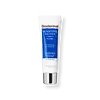What's inside
What's inside
 Key Ingredients
Key Ingredients

 Benefits
Benefits

 Concerns
Concerns

 Ingredients Side-by-side
Ingredients Side-by-side

Water
Skin ConditioningAloe Barbadensis Leaf Juice
Skin ConditioningCaprylic/Capric Triglyceride
MaskingGlyceryl Stearate
EmollientEthylhexyl Palmitate
EmollientGlycerin
HumectantStearic Acid
CleansingCetyl Alcohol
EmollientStearyl Alcohol
EmollientDipalmitoyl Hydroxyproline
Skin ConditioningAllantoin
Skin ConditioningHyaluronic Acid
HumectantLecithin
EmollientCocos Nucifera Water
MaskingLactococcus Ferment Lysate
Skin ConditioningTocopherol
AntioxidantPhenoxyethanol
PreservativeEthylhexylglycerin
Skin ConditioningWater, Aloe Barbadensis Leaf Juice, Caprylic/Capric Triglyceride, Glyceryl Stearate, Ethylhexyl Palmitate, Glycerin, Stearic Acid, Cetyl Alcohol, Stearyl Alcohol, Dipalmitoyl Hydroxyproline, Allantoin, Hyaluronic Acid, Lecithin, Cocos Nucifera Water, Lactococcus Ferment Lysate, Tocopherol, Phenoxyethanol, Ethylhexylglycerin
Water
Skin ConditioningGlycerin
HumectantCanola Oil
EmollientAlpha-Glucan Oligosaccharide
CleansingDiethylhexyl Carbonate
EmollientDimethicone
EmollientXylitylglucoside
HumectantCetearyl Olivate
Butyrospermum Parkii Butter Extract
Skin ConditioningStearyl Dimethicone
EmollientPanthenol
Skin ConditioningButyrospermum Parkii Butter
Skin ConditioningAnhydroxylitol
HumectantSorbitan Olivate
EmulsifyingPolymnia Sonchifolia Root Juice
Skin ConditioningTocopheryl Acetate
AntioxidantAllantoin
Skin ConditioningSucrose Stearate
EmollientXylitol
HumectantMaltodextrin
AbsorbentGlucose
HumectantHydrolyzed Hyaluronic Acid
HumectantLactobacillus
Skin ConditioningAmmonium Acryloyldimethyltaurate/Vp Copolymer
Acrylates/C10-30 Alkyl Acrylate Crosspolymer
Emulsion StabilisingXanthan Gum
EmulsifyingCitric Acid
BufferingSodium Hydroxide
BufferingPhenoxyethanol
PreservativeSodium Benzoate
MaskingWater, Glycerin, Canola Oil, Alpha-Glucan Oligosaccharide, Diethylhexyl Carbonate, Dimethicone, Xylitylglucoside, Cetearyl Olivate, Butyrospermum Parkii Butter Extract, Stearyl Dimethicone, Panthenol, Butyrospermum Parkii Butter, Anhydroxylitol, Sorbitan Olivate, Polymnia Sonchifolia Root Juice, Tocopheryl Acetate, Allantoin, Sucrose Stearate, Xylitol, Maltodextrin, Glucose, Hydrolyzed Hyaluronic Acid, Lactobacillus, Ammonium Acryloyldimethyltaurate/Vp Copolymer, Acrylates/C10-30 Alkyl Acrylate Crosspolymer, Xanthan Gum, Citric Acid, Sodium Hydroxide, Phenoxyethanol, Sodium Benzoate
 Reviews
Reviews

Ingredients Explained
These ingredients are found in both products.
Ingredients higher up in an ingredient list are typically present in a larger amount.
Allantoin is a soothing ingredient known for its protective and moisturizingg properties. Because of this, it is often added to products with strong active ingredients.
Studies show higher concentrations of this ingredient can promote wound healing.
Though it can be derived from the comfrey plant, allantoin is produced synthetically for cosmetic products to ensure purity.
Learn more about AllantoinGlycerin is already naturally found in your skin. It helps moisturize and protect your skin.
A study from 2016 found glycerin to be more effective as a humectant than AHAs and hyaluronic acid.
As a humectant, it helps the skin stay hydrated by pulling moisture to your skin. The low molecular weight of glycerin allows it to pull moisture into the deeper layers of your skin.
Hydrated skin improves your skin barrier; Your skin barrier helps protect against irritants and bacteria.
Glycerin has also been found to have antimicrobial and antiviral properties. Due to these properties, glycerin is often used in wound and burn treatments.
In cosmetics, glycerin is usually derived from plants such as soybean or palm. However, it can also be sourced from animals, such as tallow or animal fat.
This ingredient is organic, colorless, odorless, and non-toxic.
Glycerin is the name for this ingredient in American English. British English uses Glycerol/Glycerine.
Learn more about GlycerinPhenoxyethanol is a preservative that has germicide, antimicrobial, and aromatic properties. Studies show that phenoxyethanol can prevent microbial growth. By itself, it has a scent that is similar to that of a rose.
It's often used in formulations along with Caprylyl Glycol to preserve the shelf life of products.
Water. It's the most common cosmetic ingredient of all. You'll usually see it at the top of ingredient lists, meaning that it makes up the largest part of the product.
So why is it so popular? Water most often acts as a solvent - this means that it helps dissolve other ingredients into the formulation.
You'll also recognize water as that liquid we all need to stay alive. If you see this, drink a glass of water. Stay hydrated!
Learn more about Water